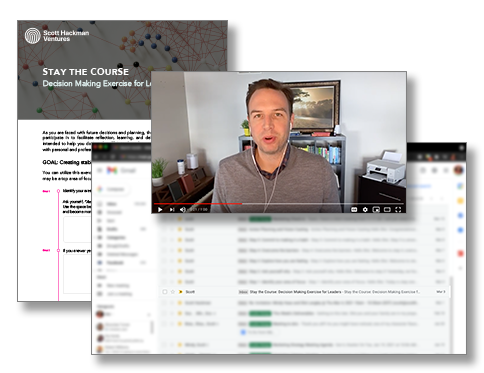In every setting, the presence of dependable and trustworthy leaders is essential. However, possessing innate leadership qualities isn’t a prerequisite for effective leadership. It’s perfectly normal for individuals to require guidance and support in honing their leadership skills. This is where we step in to assist.
In this article, we aim to clarify what a leadership development program entails, its significance for your company, and the meticulous approach we take to ensure its success.
What Is A Leadership Development Program?
Leadership development training refers to programs or activities that work to improve employees’ leadership skills, including decision-making, taking ownership, connecting senior leaders with front-line employees, providing inspiration, developing others, building effective teams, and cultivating and reshaping work culture.
Consider implementing a leadership development program for your organization in the following circumstances:
- If you, as a top executive, sense a misalignment between your vision and the values of other senior leaders or mid-level managers in your company.
- If leaders or mid-level managers reporting to you seem to be struggling with taking ownership of their work or rely too heavily on you for direction.
- If you recently got promoted from within your team and feel unprepared for the responsibilities that come with it.
If you find yourself in one of the situations above, good news – you are not alone. These struggles are common.
47% of company leaders believe there will be a shortage of leadership or executive-level skills in the future. Only 40% of leaders rate their organization’s leadership quality as “very good” or “excellent.”1
Benefits Of A Leadership Development Program
- Increased engagement and retention: In today’s workplace, individuals crave not just a job, but also personal growth and advancement. When leaders face challenges in their leadership skills, their existing strengths may not be enough to help them progress. A robust leadership training program is essential for advancing your leaders’ careers. Importantly, well-trained leaders tend to contribute more and stay with the company longer. A majority of individuals, constituting 57%, expressed the necessity to depart from their current companies in order to progress in their careers.2; Those who receive quality coaching are 1.5 times less likely to feel the need to change companies for career advancement.3
- A better work culture for your company: According to Qualtrics research, workplace belonging is predominantly influenced by leaders who advocate for their teams and contribute positively to the organizational culture. Individuals who are trusted, valued, and heard by their managers often progress into managerial roles, carrying these positive influences forward.4
- Readiness for future changes and risks: The realm of leadership is in a constant state of flux, shaped by the transformative forces of remote work, the ascent of artificial intelligence, and the growing spotlight on mental health in the workplace. In this dynamic landscape, today’s leaders encounter distinct challenges that call for adaptability and ingenuity to address the evolving needs of their teams and organizations. As Forbes contributor, Rhett Power wrote, “Leaders have a lot of minefields to navigate today. However, these challenges also serve as catalysts for personal growth, leadership development, and increased resilience.” 5 6
How To Build A Leadership Development Program
At SHV, we suggest 6 effective steps to develop a leadership development program
- Step 1: Spot Strengths and Misalignment
The process begins with top executives having open and honest conversations to engage the specific strengths of mid to high-level leaders and discover how to utilize those strengths to further enhance the organization’s vision. Through collaborative efforts, you aim to identify and discuss any instances where your company’s vision aligns or diverges from your leaders’ daily actions, fostering a clear and nuanced understanding of the path forward. - Step 2: Gentle Awareness Cultivation
Approach the awareness-raising process with a personal touch. Utilize targeted assessments and open conversations to gently guide leaders toward recognizing specific gaps between their current work and your company’s vision. Offer specific resources and support tailored to individual growth areas, ensuring a hands-on approach and accountability for their development. - Step 3: Maximizing Leaders’ Specialties
Recognize the special powers of you or your leaders, then maximize the positive impact those specialties can bring by intentionally creating feedback loops and opportunities. Delegate responsibilities based on individual strengths, promoting a culture of trust and autonomy. Provide opportunities and keep recognizing and rewarding their achievements – Managers showed 8.9% greater profitability when they received feedback on their strengths.7 - Step 4: Collaboratively Address Challenges
To tackle challenging areas encountered by leaders, adopt a collaborative team approach. Engage a group of leaders in workshops and facilitate discussions to collectively align with the vision. Highlight the significance of teamwork in cultivating a supportive environment that effectively addresses both individual and collective challenges. - Step 5: Continuous, Personalized Support
Nurturing leadership skills is an ongoing, personalized journey – consider implementing a long-term coaching program as the foundation for continuous leadership development, ensuring leaders feel understood and supported throughout their development process.
Leadership is more than just skills; it’s about trust, autonomy, and growth. Whether you’re a top executive sensing misalignment or a newly promoted leader feeling unprepared, know you’re not alone. Our consultants at SHV are here to support your leadership journey with coaching and personalized assistance. We offer a wealth of resources to enhance your potential, performance, and engagement, particularly during periods of change, business growth, and transitions in work culture. If you find this blog valuable, explore further with a discovery call.
Your success is our success, and we’re with you every step of the way.


Alicia Hofer is passionate about designing creative and data-driven solutions for the workplace. Meet Alicia.
References
- https://thomasgriffin.com/leadership-statistics/
- https://www.gallup.com/workplace/231593/why-great-managers-rare.aspx
- https://www.ddiworld.com/global-leadership-forecast-2023/coaching-cultures
- https://www.qualtrics.com/ebooks-guides/2024-ex-trends-report/?utm_lp=blog-belonging-at-work/?utm_lp=blog-belonging-at-work-inline2
- https://cpe.ucdavis.edu/news/4-reasons-why-leadership-training-matters
- https://www.forbes.com/sites/rhettpower/2023/07/21/looking-ahead—2024-survival-guide-navigating-leadership-challenges-in-a-rapidly-changing-world/?sh=4e780521ed80
- https://www.inc.com/marcel-schwantes/why-do-people-quit-their-jobs-exactly-entire-reason-can-be-summed-up-in-1-word.html
- https://www.inc.com/marcel-schwantes/why-do-people-quit-their-jobs-exactly-entire-reason-can-be-summed-up-in-1-word.html



